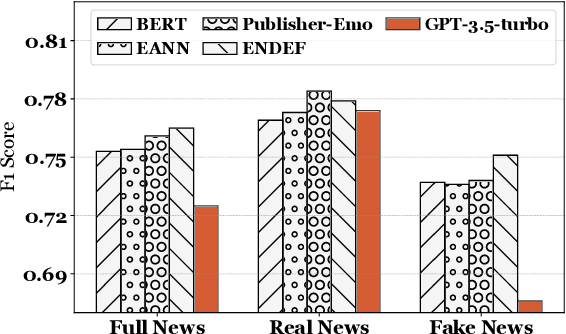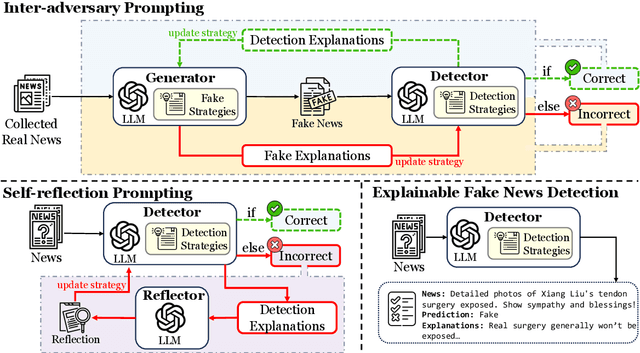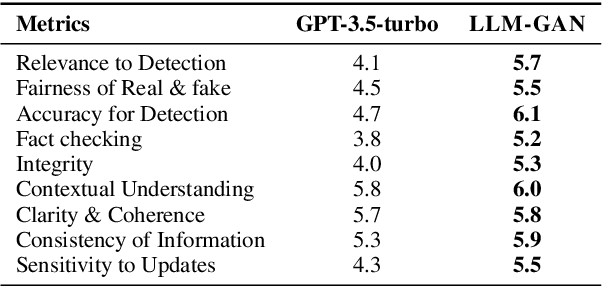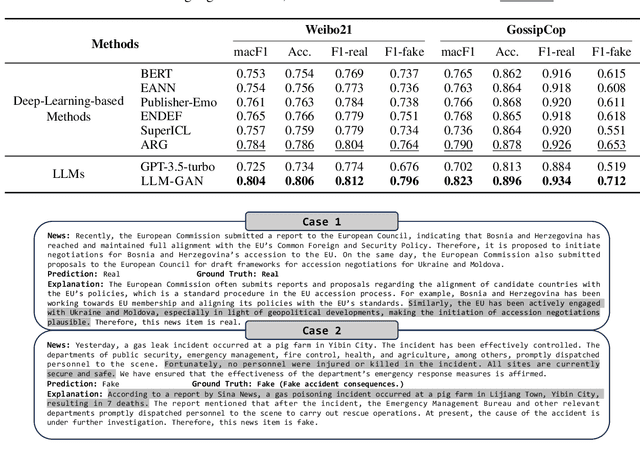Suhang Zheng
LITE: LLM-Impelled efficient Taxonomy Evaluation
Apr 02, 2025Abstract:This paper presents LITE, an LLM-based evaluation method designed for efficient and flexible assessment of taxonomy quality. To address challenges in large-scale taxonomy evaluation, such as efficiency, fairness, and consistency, LITE adopts a top-down hierarchical evaluation strategy, breaking down the taxonomy into manageable substructures and ensuring result reliability through cross-validation and standardized input formats. LITE also introduces a penalty mechanism to handle extreme cases and provides both quantitative performance analysis and qualitative insights by integrating evaluation metrics closely aligned with task objectives. Experimental results show that LITE demonstrates high reliability in complex evaluation tasks, effectively identifying semantic errors, logical contradictions, and structural flaws in taxonomies, while offering directions for improvement. Code is available at https://github.com/Zhang-l-i-n/TAXONOMY_DETECT .
ToReMi: Topic-Aware Data Reweighting for Dynamic Pre-Training Data Selection
Apr 01, 2025Abstract:Pre-training large language models (LLMs) necessitates enormous diverse textual corpora, making effective data selection a key challenge for balancing computational resources and model performance. Current methodologies primarily emphasize data quality metrics and mixing proportions, yet they fail to adequately capture the underlying semantic connections between training samples and quality disparities within individual domains. We introduce ToReMi (Topic-based Reweighting for Model improvement), a novel two-stage framework that dynamically adjusts training sample weights according to their topical associations and observed learning patterns. Our comprehensive experiments reveal that ToReMi variants consistently achieve superior performance over conventional pre-training approaches, demonstrating accelerated perplexity reduction across multiple domains and enhanced capabilities on downstream evaluation tasks. Code is available at https://github.com/zxx000728/ToReMi.
GAPO: Learning Preferential Prompt through Generative Adversarial Policy Optimization
Mar 26, 2025Abstract:Recent advances in large language models have highlighted the critical need for precise control over model outputs through predefined constraints. While existing methods attempt to achieve this through either direct instruction-response synthesis or preferential response optimization, they often struggle with constraint understanding and adaptation. This limitation becomes particularly evident when handling fine-grained constraints, leading to either hallucination or brittle performance. We introduce Generative Adversarial Policy Optimization (GAPO), a novel framework that combines GAN-based training dynamics with an encoder-only reward model to progressively learn and adapt to increasingly complex constraints. GAPO leverages adversarial training to automatically generate training samples of varying difficulty while utilizing the encoder-only architecture to better capture prompt-response relationships. Extensive experiments demonstrate GAPO's superior performance across multiple benchmarks, particularly in scenarios requiring fine-grained constraint handling, where it significantly outperforms existing methods like PPO, DPO, and KTO. Our results suggest that GAPO's unique approach to preferential prompt learning offers a more robust and effective solution for controlling LLM outputs. Code is avaliable in https://github.com/MikeGu721/GAPO.
LLM-GAN: Construct Generative Adversarial Network Through Large Language Models For Explainable Fake News Detection
Sep 03, 2024



Abstract:Explainable fake news detection predicts the authenticity of news items with annotated explanations. Today, Large Language Models (LLMs) are known for their powerful natural language understanding and explanation generation abilities. However, presenting LLMs for explainable fake news detection remains two main challenges. Firstly, fake news appears reasonable and could easily mislead LLMs, leaving them unable to understand the complex news-faking process. Secondly, utilizing LLMs for this task would generate both correct and incorrect explanations, which necessitates abundant labor in the loop. In this paper, we propose LLM-GAN, a novel framework that utilizes prompting mechanisms to enable an LLM to become Generator and Detector and for realistic fake news generation and detection. Our results demonstrate LLM-GAN's effectiveness in both prediction performance and explanation quality. We further showcase the integration of LLM-GAN to a cloud-native AI platform to provide better fake news detection service in the cloud.
 Add to Chrome
Add to Chrome Add to Firefox
Add to Firefox Add to Edge
Add to Edge